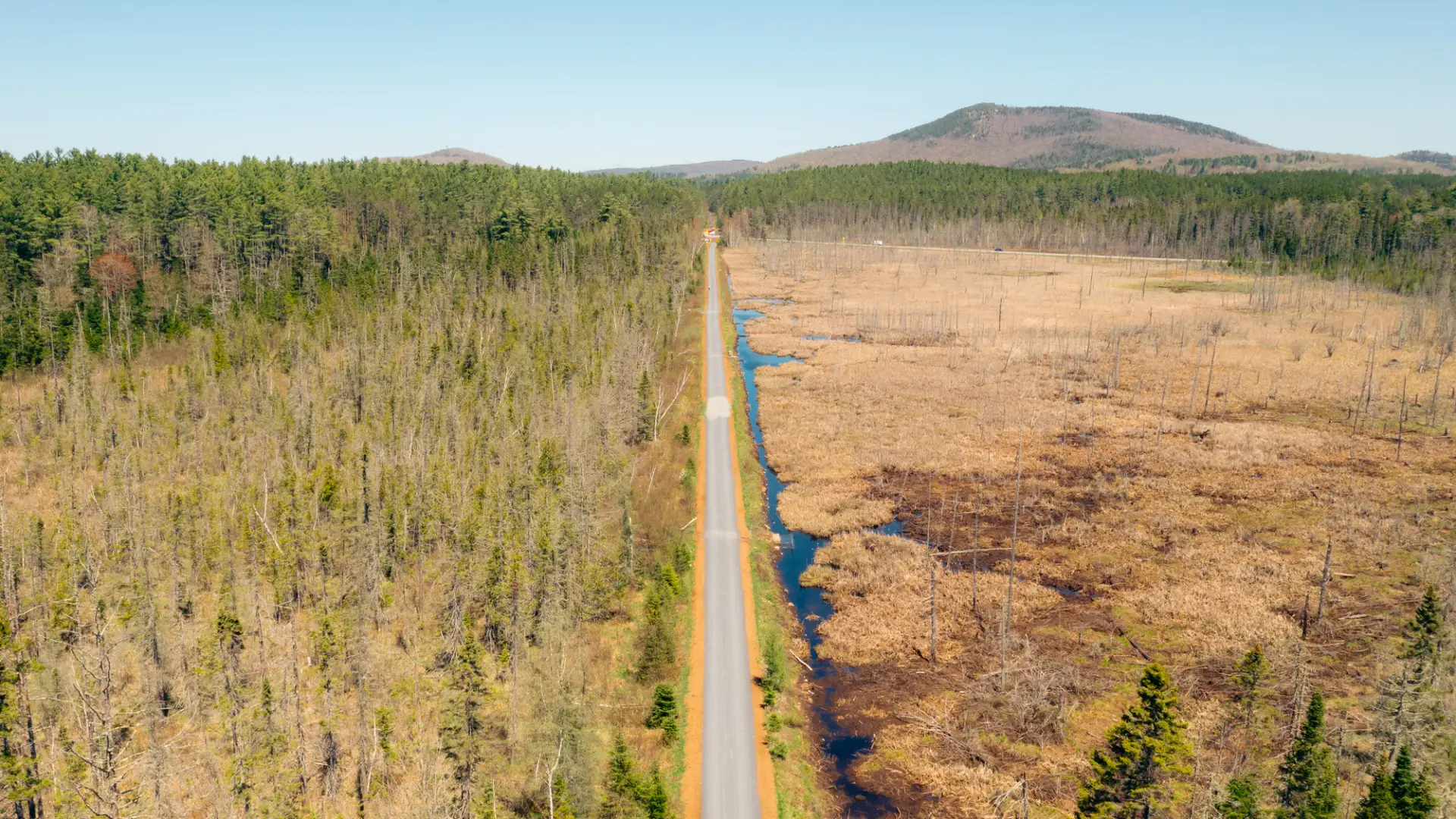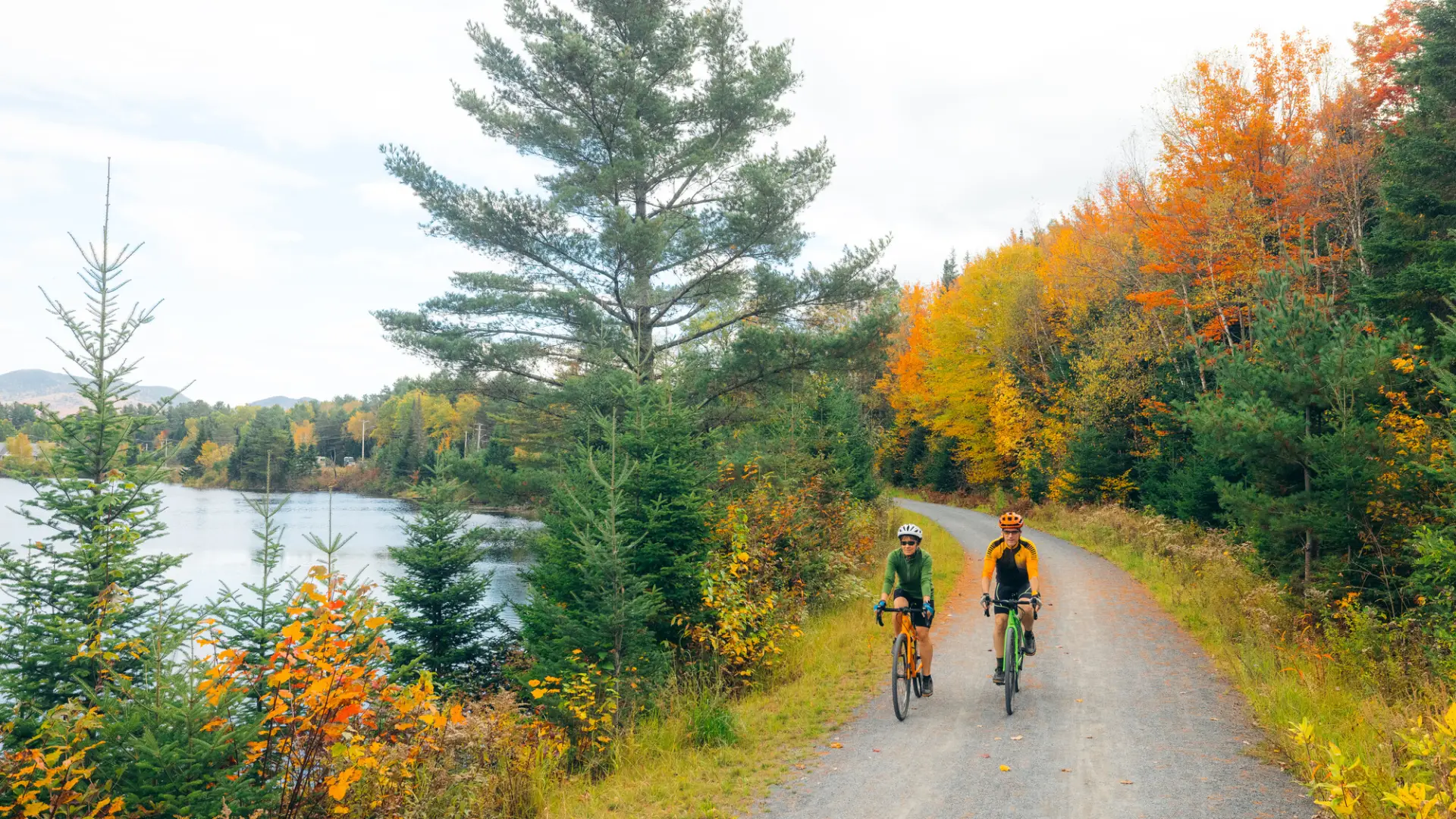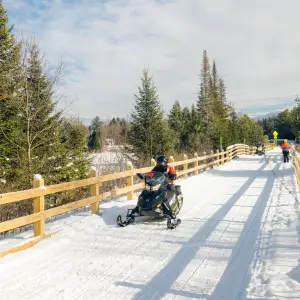Spring
Summer
Fall
Winter
Experience the Adirondacks
Connecting communities through nature
The Adirondack Rail Trail is a versatile and inclusive multi-use recreation trail that spans 34 miles through picturesque Lake Placid, Ray Brook, Saranac Lake, Lake Clear, and Tupper Lake. Designed with accessibility in mind, the path features a gentle grade, making it welcoming to a wide range of ages and abilities. The trail is free to use and not only promotes safe and healthy exercise, but also provides an opportunity for residents and visitors to connect with nature and absorb the rich history of the Adirondack region.
The Adirondack Rail Trail is fully complete and ready for all of your adventures!

Your all-season path through the Tri-Lakes
Enjoy the scenic, multi-use Adirondack Rail Trail year-round! With surfaces ranging from large crushed stone to sand, the trail is designed to accommodate a wide variety of activities. In the non-winter months, it’s perfect for walking, running, hiking, birding, and gravel biking. You’ll also find excellent fishing opportunities along the waterways that run adjacent to the trail. While motorized vehicles are not permitted, snowmobiles are allowed in winter, and Class 1 e-bikes are welcome.
More than just a path, the Rail Trail offers a unique way to travel between the Tri-Lakes communities under your own power. Its gentle grade makes for an easy, scenic ride between Lake Placid, Saranac Lake, and beyond—no car required. Whether you’re a local out for a daily stroll or a visitor soaking up the Adirondack beauty, the trail offers a vibrant, community-oriented experience every time you set foot—or wheel—on it.
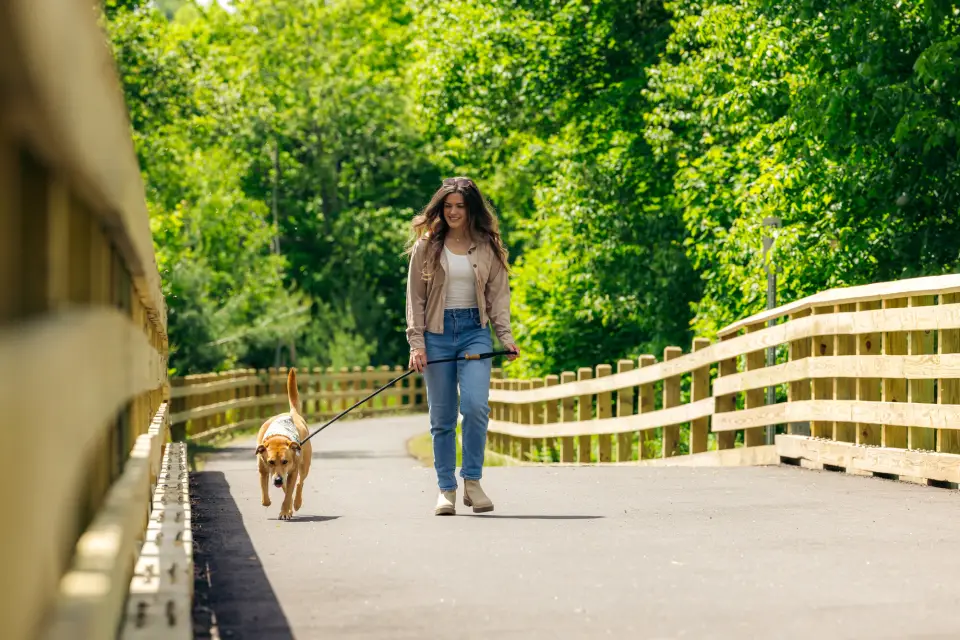
Your all-season path through the Tri-Lakes
Enjoy the scenic, multi-use Adirondack Rail Trail year-round! With surfaces ranging from large crushed stone to sand, the trail is designed to accommodate a wide variety of activities. In the non-winter months, it’s perfect for walking, running, hiking, birding, and gravel biking. You’ll also find excellent fishing opportunities along the waterways that run adjacent to the trail. While motorized vehicles are not permitted, snowmobiles are allowed in winter, and Class 1 e-bikes are welcome.
More than just a path, the Rail Trail offers a unique way to travel between the Tri-Lakes communities under your own power. Its gentle grade makes for an easy, scenic ride between Lake Placid, Saranac Lake, and beyond—no car required. Whether you’re a local out for a daily stroll or a visitor soaking up the Adirondack beauty, the trail offers a vibrant, community-oriented experience every time you set foot—or wheel—on it.

Your all-season path through the Tri-Lakes
Enjoy the scenic, multi-use Adirondack Rail Trail year-round! With surfaces ranging from large crushed stone to sand, the trail is designed to accommodate a wide variety of activities. In the non-winter months, it’s perfect for walking, running, hiking, birding, and gravel biking. You’ll also find excellent fishing opportunities along the waterways that run adjacent to the trail. While motorized vehicles are not permitted, snowmobiles are allowed in winter, and Class 1 e-bikes are welcome.
More than just a path, the Rail Trail offers a unique way to travel between the Tri-Lakes communities under your own power. Its gentle grade makes for an easy, scenic ride between Lake Placid, Saranac Lake, and beyond—no car required. Whether you’re a local out for a daily stroll or a visitor soaking up the Adirondack beauty, the trail offers a vibrant, community-oriented experience every time you set foot—or wheel—on it.
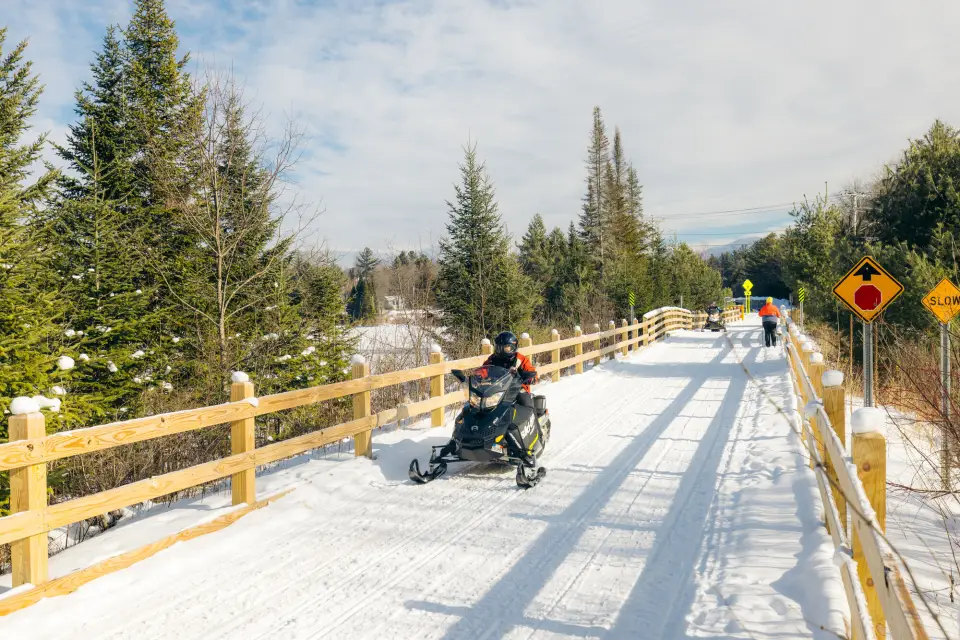
Your all-season path through the Tri-Lakes
Embrace winter on the Adirondack Rail Trail, a scenic, multi-use path perfect for snowshoeing, cross-country skiing, fat biking, and snowmobiling. With packed snow over crushed stone, the trail offers a peaceful, accessible way to explore the snow-covered landscape between communities. Snowmobiles are welcome in winter, and Class 1 e-bikes are allowed year-round—making it a great option for winter adventure at your own pace.
More than just a path, the Rail Trail offers a unique way to travel between the Tri-Lakes communities under your own power. Its gentle grade makes for an easy, scenic ride between Lake Placid, Saranac Lake, and beyond—no car required. Whether you’re a local out for a daily stroll or a visitor soaking up the Adirondack beauty, the trail offers a vibrant, community-oriented experience every time you set foot—or wheel—on it.
To better help you plan your trips, get the Adirondacks, USA Snowmobile App. With an interactive map featuring the Adirondack Rail Trail, find all the information you need to navigate snowy trails and find gas stations, stores, restaurants, and lodging properties. This app is your "one-stop shop" for all things snowmobile! Download today on the App Store or get it on Google Play.

Why you'll love the Rail Trail
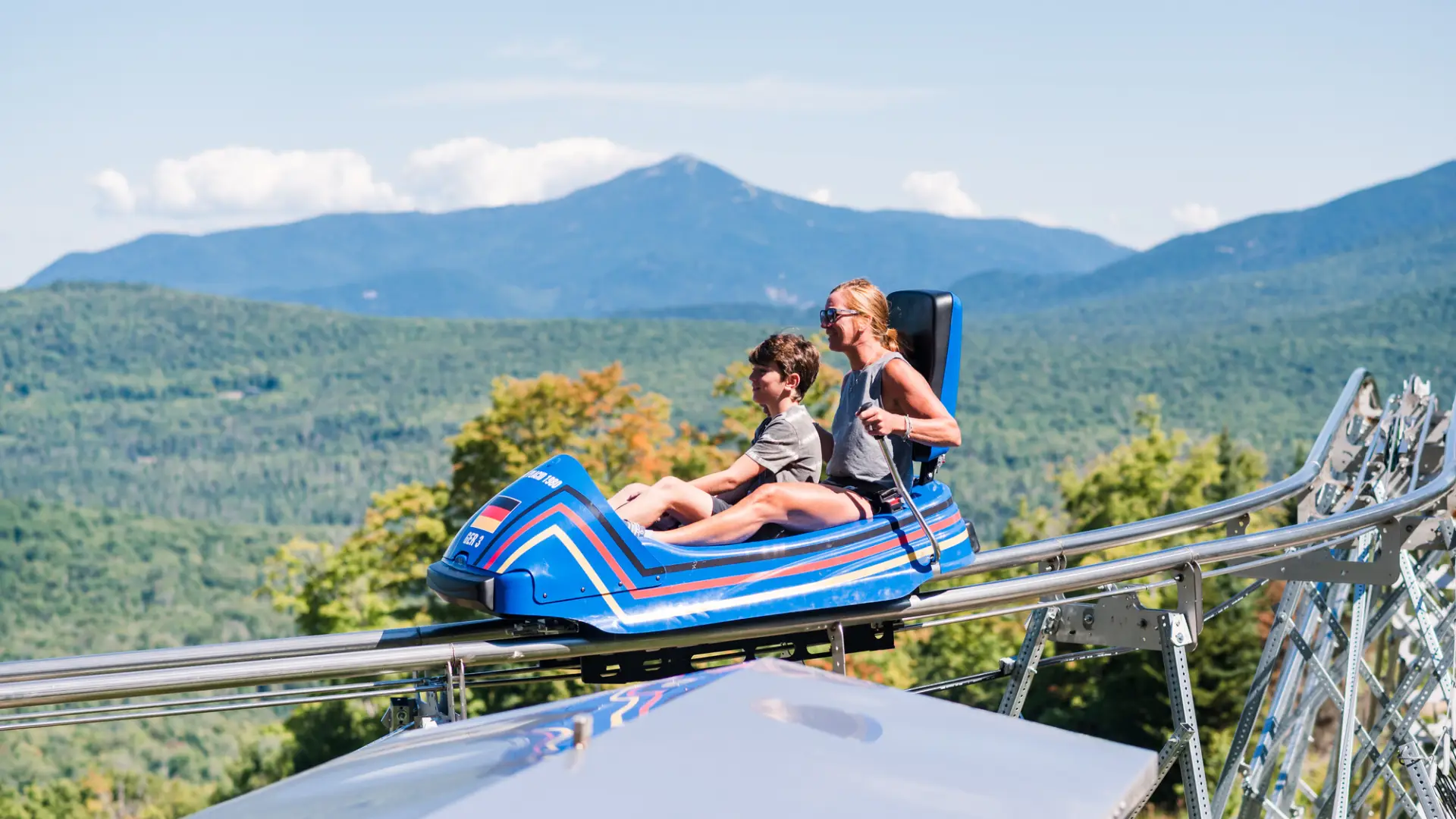
Activities around the Rail Trail

Get the latest on trail closures and construction

Where to stay in Lake Placid
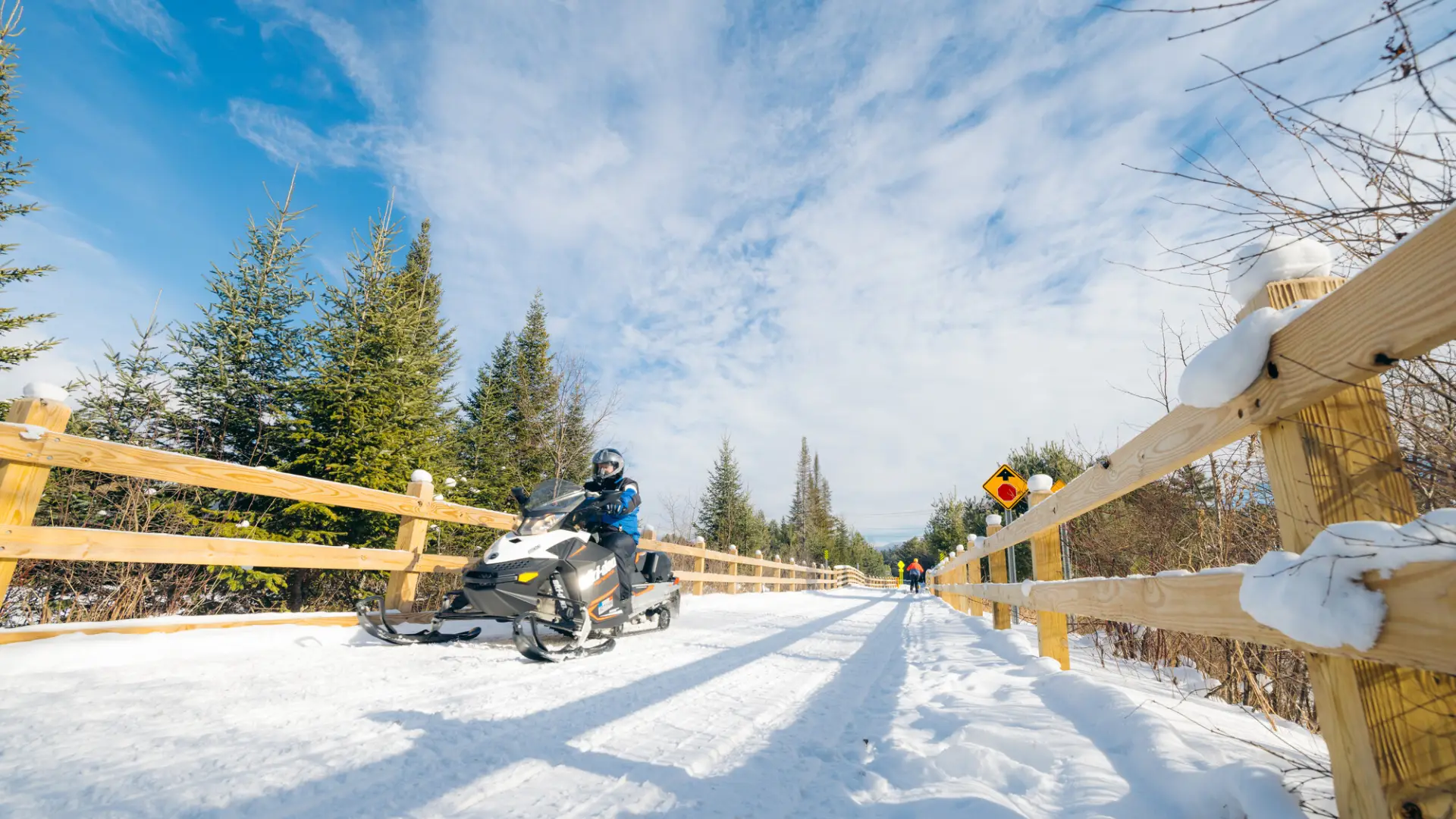
Safe winter recreation on the Rail Trail

Find lodging for you winter stay
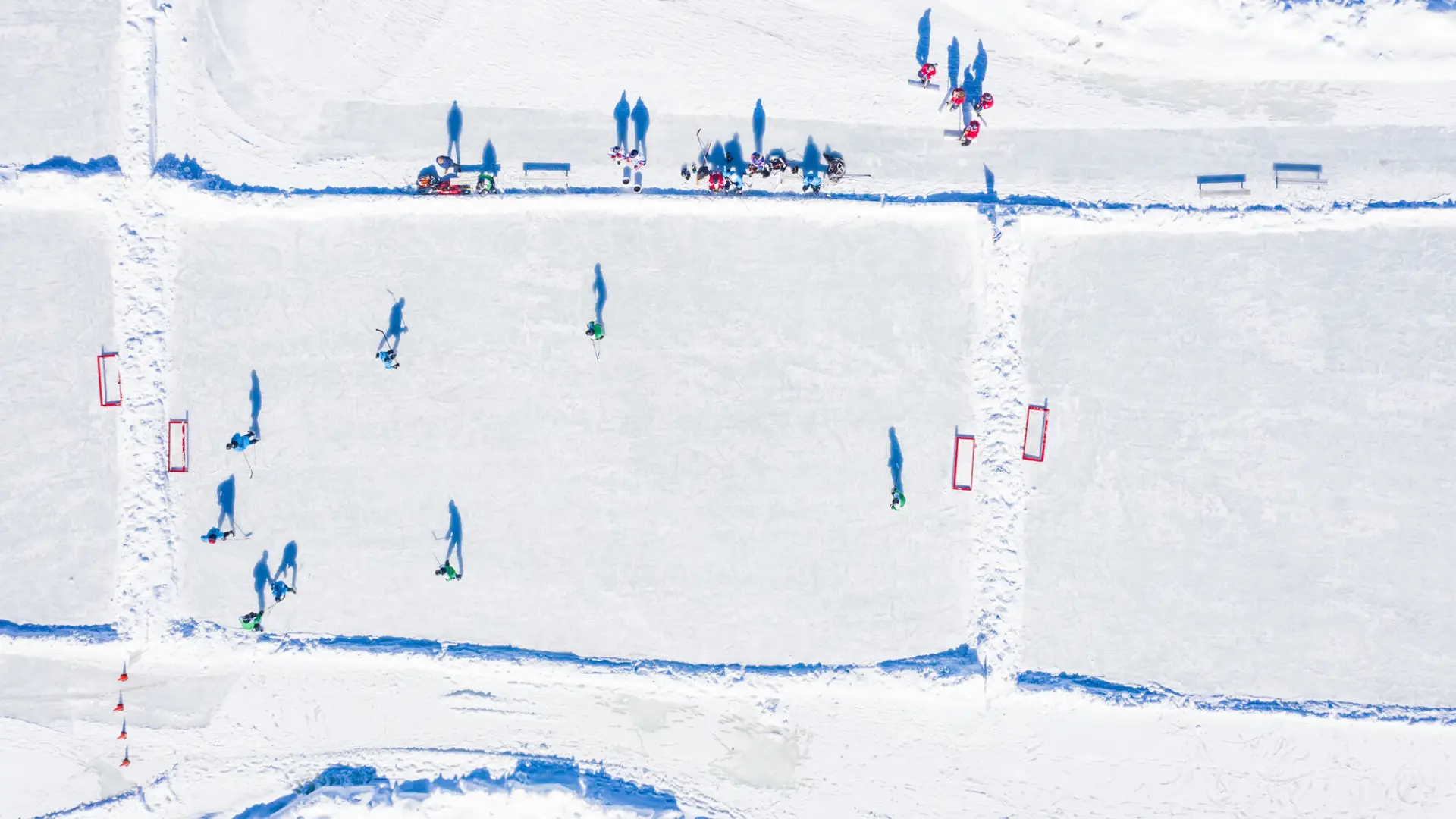
Winter experiences near the Rail Trail.
Frequently Asked Questions
The 9 mile section of the Rail Trail from Lake Placid to Saranac Lake, as well as the 15 mile section from Saranac Lake to Floodwood Road through Lake Clear, are open to the public! Lake Clear to Tupper Lake is still closed, and will be open to the public at a later date when construction is finished. For now, please stay off the Lake Clear/Floodwood Road to Tupper Lake section of the Rail Trail.
Motorized vehicles, aside from snowmobiles, are prohibited on the entire length of the trail in all seasons. You can, however, use class 1 e-bikes during the non-winter months.
Please practice Leave No Trace™ principles while recreating on the trail and carry out what you carry in.
Wildlife commonly found in the Adirondacks that may be present on or adjacent to the trail include large mammals such as moose, black bear, and white-tailed deer, along with large birds of prey such as osprey and many species of songbirds. Please be respectful and observe wildlife from a distance.
Per the Adirondack Rail Trail Association, access to the Rail Trail from Station St. in Lake Placid is as follows:
• If coming from Wilmington, make a left onto 73 in the Village of Lake Placid, and then a right onto Station St. in Lake Placid. Go past the historical society, and parking is on the left at the trailhead.
• If coming from the village of Lake Placid take Main Street to the intersection with 73 and make a right and then another right on Station St (at Lisa G's) go past the historical society. Parking is on the left at the trail head.
• If coming from Keene, take Old Military Road just past the ski jumps to Station Street (just past the elementary school) then right to the trail head, just before the historical society.
Please do not park at the Lake Placid-North Elba Historical Society when recreating on the Rail Trail. Only utilize their parking when you are taking a visit to the Historical Society, which we highly recommend!
In addition to the following parking areas, you can also find public parking in the communities along the trail, then bike to where the Rail Trail crosses in town.
Haystack Mountain trailhead - On State Route 86 between Ray Brook and Lake Placid
Union Depot - In Saranac Lake, on Depot Street near Stewart's
Little Clear Pond parking area- Off State Route 30, 3.5 miles west of the Hamlet of Lake Clear Junction
Fowler's Crossing - On State Route 86 east of Saranac Lake
Scarface Mountain trailhead - On County Route 32, 0.2 miles south of State Route 86.
Fish Pond Truck Trail parking area - Off State Route 30, 3.5 miles west of Lake Clear Junction
Yes, the entire trail is of wheel-chair accessible grades.
Before becoming a year-round recreation opportunity for outdoor enthusiasts of all sorts, the rail trail started as a a freight and passenger service railway over 100 years ago in 1892 (also the year the Adirondack Park was established!). Between then and now, the railroad changed hands and usage many times. In 1974, the State of New York acquired the Remsen to Lake Placid line, and between then and now multiple sections of the railway were used at times for passenger, freight, or both purposes. In 2014, the State announced reopened the management plan for the corridor, recommending that the 34 miles between Lake Placid and Tupper Lake be converted into a multi-use trail, with the APA subsequently voting in favor of this in 2016, and the NYSDOT removing rail infrastructure on the Tupper Lake to Lake Placid section in 2021.
You can rent bicycles and class 1 e-bikes from local businesses like Placid Planet, High Peaks Cyclery, Bike Lake Placid, and Silver Birch Cycles (Saranac Lake).
Frequently Asked Questions
Motorized vehicles, aside from snowmobiles, are prohibited on the entire length of the trail in all seasons. You can, however, use class 1 e-bikes.
Please practice Leave No Trace™ principles while recreating on the trail and carry out what you carry in.
Wildlife commonly found in the Adirondacks that may be present on or adjacent to the trail include large mammals such as moose, black bear, and white-tailed deer, along with large birds of prey such as osprey and many species of songbirds. Please be respectful and observe wildlife from a distance.
Per the Adirondack Rail Trail Association, access to the Rail Trail from Station St. in Lake Placid is as follows:
• If coming from Wilmington make a left onto 73 in the Village of Lake Placid and then a right onto Station St. in Lake Placid go past the historical society. Parking is on the left at the trail head.
• If coming from the village of Lake Placid take Main Street to the intersection with 73 and make a right and then another right on Station St (at LisaG's) go past the historical society. Parking is on the left at the trail head.
• If coming from Keene, take Old Military Road just past the ski jumps to Station Street (just past the elementary school) then right to the trail head, just before the historical society.
Please do not park at the Lake Placid-North Elba Historical Society when recreating on the Rail Trail. Only utilize their parking when you are taking a visit to the Historical Society, which we highly recommend!
In addition to the following parking areas, you can also find public parking in the communities along the trail, then bike to where the Rail Trail crosses in town.
Haystack Mountain trailhead - On State Route 86 between Ray Brook and Lake Placid
Union Depot - In Saranac Lake, on Depot Street near Stewart's
Little Clear Pond parking area- Off State Route 30, 3.5 miles west of the Hamlet of Lake Clear Junction
Fowler's Crossing - On State Route 86 east of Saranac Lake
Scarface Mountain trailhead - On County Route 32, 0.2 miles south of State Route 86.
Fish Pond Truck Trail parking area - Off State Route 30, 3.5 miles west of Lake Clear Junction
Yes, the entire trail is of wheel-chair accessible grades.
Before becoming a year-round recreation opportunity for outdoor enthusiasts of all sorts, the rail trail started as a a freight and passenger service railway over 100 years ago in 1892 (also the year the Adirondack Park was established!). Between then and now, the railroad changed hands and usage many times. In 1974, the State of New York acquired the Remsen to Lake Placid line, and between then and now multiple sections of the railway were used at times for passenger, freight, or both purposes. In 2014, the State announced reopened the management plan for the corridor, recommending that the 34 miles between Lake Placid and Tupper Lake be converted into a multi-use trail, with the APA subsequently voting in favor of this in 2016, and the NYSDOT removing rail infrastructure on the Tupper Lake to Lake Placid section in 2021.
You can rent fat-tire bikes from local businesses like High Peaks Cyclery, Sled & Spoke (Saranac Lake), and Silver Birch Cycles (Saranac Lake).
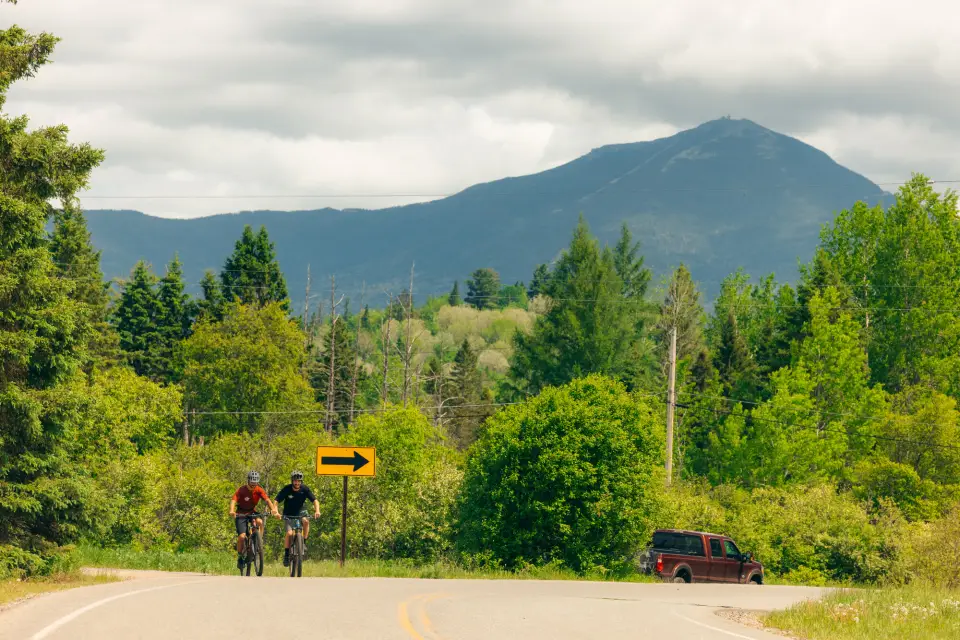
Share the Roads
The Adirondack Rail Trail significantly increases the bikeability of Lake Placid and surrounding communities. If you're using the Rail Trail to commute or travel between towns on your bike, you will most likely have to ride a road or two on the way to your destination. Make sure our roadways are a safe extension of your trail experience. Check out our safety tips for sharing roads safely!
